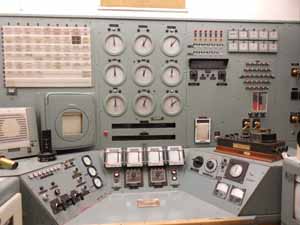Radioisotopes
Radionuclides, more commonly known by physicists and chemists as radioactive isotopes or radioisotopes, are atoms with an unstable nucleus which undergo radioactive decay, resulting in the emission of gamma rays and/or subatomic particles such as alpha and beta particles. Radioisotopes can occur naturally or can be produced artificially and those with suitable half-lives are crucial in a number of technologies, such as nuclear medicine. However, radioisotopes can also present dangers to health.
In nuclear medicine, radioisotopes can be used for diagnosis, treatment, and research. Radioactive chemical tracers emitting gamma rays can provide diagnostic information about a person’s internal anatomy and the functioning of specific organs. Radioisotopes can also serve as a method of treatment in various forms of tumors. In biochemistry and genetics, radiosotopes allow tracing chemical and physiological processes occurring in living organisms, such as DNA replication or amino acid transport.
Radioisotopes are also useful in agriculture and industry. To preserve food, radiation is used to stop the sprouting of root crops after harvesting, to kill parasites and pests, and to control the ripening of stored fruit and vegetables. In industries such as construction and mining, radioisotopes can be used to examine welds, to detect leaks, to study the rate of wear, and to detect erosion and corrosion of metals. Radioisotopes are also used to trace the movement of pollutants and other wastes and can also be used to study the movement of surface water. Naturally occurring radioisotopes are used in geology, archaeology, and paleontology to measure ages of rocks, minerals, and fossil materials.
Nuclear Power
Although developing an atomic bomb was the Manhattan Project’s main objective, the work done during the war has had many other implications for science and technology. Nuclear power was one of the principal innovations as scientists and engineers proved how to harness the power of the atom to produce electricity. While in the past decades concerns over waste disposal and costs have stymied the growth of US nuclear power, recently it has become an ever-more-appealing option in the age of global warming and skyrocketing oil prices. Senators are calling for 100 new nuclear reactors in twenty years to meet growing energy demands.
Nuclear Medicine
 A little known but equally important achievement during the Manhattan Project was the advancement of “nuclear medicine”, or the use of atomic energy and radioisotopes for medical purposes. This concept, of course, was not new. Ever since the discovery of radium by French physicists Marie and Pierre Curie in 1898, physicians had used the isotope to treat a variety of disorders, from acne to hemorrhoids to cancer. Radium is highly radioactive and its decay product, radon gas, is also radioactive. Radium, which is chemically similar to calcium, has the potential to cause great harm by replacing calcium in bones. Exposure to radium can cause cancer and other disorders, because its decay product radon emits alpha particles which can kill and mutate cells.
A little known but equally important achievement during the Manhattan Project was the advancement of “nuclear medicine”, or the use of atomic energy and radioisotopes for medical purposes. This concept, of course, was not new. Ever since the discovery of radium by French physicists Marie and Pierre Curie in 1898, physicians had used the isotope to treat a variety of disorders, from acne to hemorrhoids to cancer. Radium is highly radioactive and its decay product, radon gas, is also radioactive. Radium, which is chemically similar to calcium, has the potential to cause great harm by replacing calcium in bones. Exposure to radium can cause cancer and other disorders, because its decay product radon emits alpha particles which can kill and mutate cells.
Very little was known about the dangerous properties of radium during the early twentieth century. During the 1920s, radium was an ingredient in many nostrums, including a popular elixir called Radiothor, which poisoned wealthy American socialite Eben M. Byers. Radium was also used in luminous paints; the tragic deaths of some young women watch-dial painters led physicians to recognize the dangers of ingesting radium. Some of the biological effects of radium were apparent from the start. The first case of so-called “radium-dermatitis” was reported in 1900, only two years after the element’s discovery. Marie Curie experimented with a tiny sample that she kept in contact with her skin for 10 hours, and noted that an ulcer appeared several days later. Handling of radium has been blamed for Curie’s death (at the age of sixty-six) due to aplastic anemia. At the time of the Manhattan Project in 1944, the “tolerance dose” for workers was set at 0.1 microgram of ingested radium. The vast amount of research conducted during the Manhattan Project on radioisotopes and other radioactive elements helped advance scientist’ understanding of the use of atomic energy for medical purposes.





